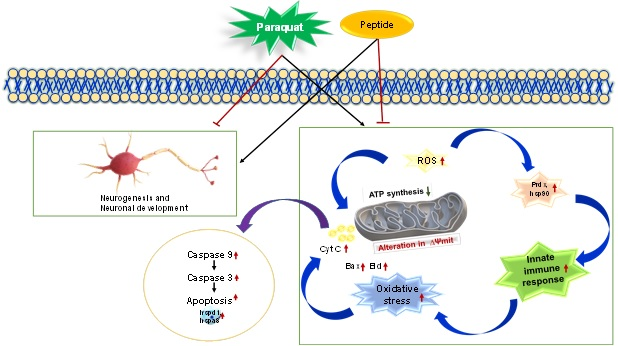Computational analysis has been used to design two peptides inspired from snake venom neurotrophin molecules which hold promise as future therapeutic applications for preventing and treating neurological disorders such as Parkinson’s disease (PD) and Alzheimer's disease (AD).
Parkinson’s and Alzheimer’s diseases are some of the most common neurodegenerative disorders. Medications or effective therapeutics are still lacking to stop, slow, or prevent these diseases. This has stimulated the exploration of hypotheses about the molecular and cellular processes that lead to neurodegeneration.
Prof. Ashis Kumar Mukherjee, Director, Institute of Advanced Study in Science and Technology (IASST), Guwahati, an institute of the Department of Science and Technology (DST), and his team have worked on the snake venom and found it to be a treasure house of drug prototypes for various biomedical applications. They can be molded into candidate lifesaving drug prototypes, like cancer, cardiovascular disease, and covid-19. They found prospects in the nerve growth factor from snake venom, a minor component of the venom characterized by Prof. Mukherjee and his group. It possesses neurogenesis properties (triggering sprouting of neurites from a cell) by binding to the Tropomyosin receptor kinase A (TrkA) receptor, the high-affinity nerve growth factor receptor of rat pheochromocytoma PC-12 cells. However, drug development from a native toxin of snake venom is tedious.
To overcome this problem, Professor Mukherjee and his collaborators have developed two novel custom peptides (commercially produced peptides for use in biomedical laboratories) ---TNP and HNP inspired by snake venom neurotrophin that regulate the development, maintenance, and function of vertebrate nervous systems. These peptides show selective binding to the human TrkA receptor of nerve cells and hence can improve the selectivity and specificity of drug molecules toward the receptor, thereby enhancing the therapeutic potency of those drug molecules.
Prof. Mukherjee emphasizes that the low molecular weight, structural stability, small size, and target sensitivity of the peptides make them powerful tools for conquering the limitations of using endogenous neurotrophins as therapeutic agents. This drug-like peptide discovered by the group can potentially reduce the progression of neurodegenerative diseases before they advance through an entirely new strategy. The treatment would be most effective for people with fewer symptoms at the early onset of the disease.
Their study will be further extended from Parkinson's model to other neurodegenerative diseases and require pharmacokinetic and pharmacodynamics studies to develop safe drug prototypes. The investigators have filed an Indian patent, and the study was recently published in the journal Free Radical Biology and Medicine (Elsevier).
Publication link: https://doi.org/10.1016/j.freeradbiomed.2023.01.019

Figure 1: The proposed neuroprotection mechanism of custom peptides against PT-induced neurotoxicity in PC-12 cells.


























